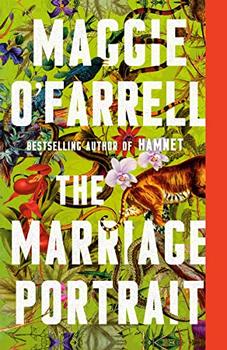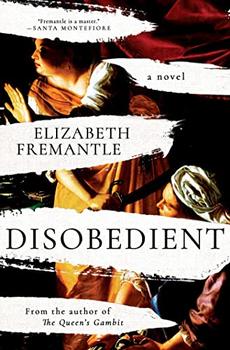Summary | Excerpt | Reading Guide | Reviews | Beyond the book | Read-Alikes | Genres & Themes | Author Bio

A novel
by Maggie O'FarrellThe author of Hamnet - New York Times bestseller and National Book Award winner - brings the world of Renaissance Italy to jewel-bright life in this unforgettable portrait of the captivating young duchess Lucrezia de' Medici as she makes her way in a troubled court.
Florence, the 1550s. Lucrezia, third daughter of the grand duke, is comfortable with her obscure place in the palazzo: free to wonder at its treasures, observe its clandestine workings, and devote herself to her own artistic pursuits. But when her older sister dies on the eve of her wedding to the ruler of Ferrara, Modena and Reggio, Lucrezia is thrust unwittingly into the limelight: the duke is quick to request her hand in marriage, and her father just as quick to accept on her behalf.
Having barely left girlhood behind, Lucrezia must now enter an unfamiliar court whose customs are opaque and where her arrival is not universally welcomed. Perhaps most mystifying of all is her new husband himself, Alfonso. Is he the playful sophisticate he appeared to be before their wedding, the aesthete happiest in the company of artists and musicians, or the ruthless politician before whom even his formidable sisters seem to tremble?
As Lucrezia sits in constricting finery for a painting intended to preserve her image for centuries to come, one thing becomes worryingly clear. In the court's eyes, she has one duty: to provide the heir who will shore up the future of the Ferranese dynasty. Until then, for all of her rank and nobility, the new duchess's future hangs entirely in the balance.
Full of the beauty and emotion with which she illuminated the Shakespearean canvas of Hamnet, Maggie O'Farrell turns her talents to Renaissance Italy in an extraordinary portrait of a resilient young woman's battle for her very survival.
The structure gives the book the feel of a murder mystery — Will he or won't he do it? What is he capable of? — and the simmering undercurrents of danger draw the reader in, enveloping us in Lucrezia's fear and confusion, but also her intelligence and bravery. By shortening the distance between Lucrezia's lifetime and our own, O'Farrell also makes the risks of succession and reproduction patently clear for modern readers. She provides a glimpse of the terror, pride, hope, danger and sometimes affection that marriage entailed for early modern women, all within an exciting and fast-paced tale...continued
Full Review
(870 words)
This review is available to non-members for a limited time. For full access,
become a member today.
(Reviewed by Rose Rankin).
 In The Marriage Portrait, Maggie O'Farrell captures the dark personality of Alfonso II d'Este, Duke of Ferrara (a region in northern Italy), who lived from 1533 to 1597. Alfonso was the last in his family lineage, which stretched back to the 13th century. As monarchs around the world have experienced throughout history, a lack of male heirs doomed the Este dynasty — despite marrying three times, Alfonso fathered no children. Prior to the end of the line, however, the Este family produced some of the most colorful characters and generous art patrons of the Italian Renaissance.
In The Marriage Portrait, Maggie O'Farrell captures the dark personality of Alfonso II d'Este, Duke of Ferrara (a region in northern Italy), who lived from 1533 to 1597. Alfonso was the last in his family lineage, which stretched back to the 13th century. As monarchs around the world have experienced throughout history, a lack of male heirs doomed the Este dynasty — despite marrying three times, Alfonso fathered no children. Prior to the end of the line, however, the Este family produced some of the most colorful characters and generous art patrons of the Italian Renaissance.
The most notable members of the family include Ercole I (d. 1505), who became a leading patron by bringing artists to the court at Ferrara — he had a ...
This "beyond the book" feature is available to non-members for a limited time. Join today for full access.

If you liked The Marriage Portrait, try these:

by Jo Harkin
Published 2025
A sweeping historical novel in the vein of Hilary Mantel and Maggie O'Farrell set during the time of the Tudors' ascent. The Pretender tells the story of Lambert Simnel, who was raised in obscurity as a peasant boy to protect his safety, believed to be the heir to the throne occupied by Richard III, and briefly crowned, at the age of ten, as King ...

by Elizabeth Fremantle
Published 2023
A riveting novel based on the life of Artemisia Gentileschi—the greatest female painter of the Renaissance—as she forges her own destiny in a world dominated by the will of men.